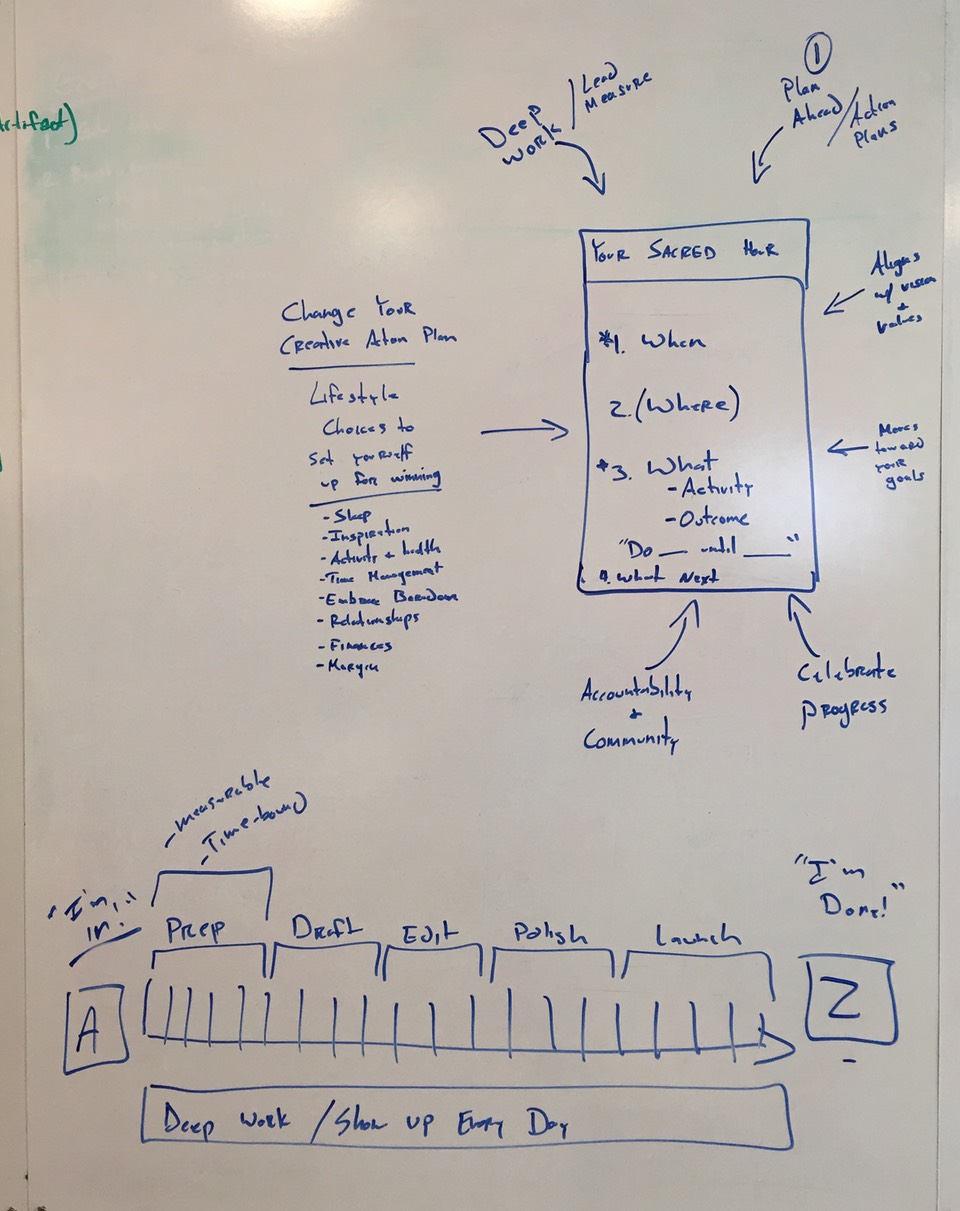
What you’re looking at here is some white board scribbling that represents the first module of my next course.
The white board is so messy and random, you might think this was our very first whiteboard session for Module One.
Actually, this is the fourth whiteboard session we’ve had like this in the past two weeks.
This is our process of taking things apart and putting them back together again.
I’m working on a new course that’s about doing your best creative work, moving from hobbyist to pro, building and caring for an audience, and making a few dollars from your creative work.
Right now the course outline consists of more than 90 individual sessions within 6 modules. Plus worksheets. Plus interviews. Plus easter eggs.
That is a massive amount of content. It’s too much.
Who has the time to work their way through all of that?
That’s why we’re trying to distill the outline down to what is most essential.
And it starts by taking apart each module and asking: What is the single most important takeaway here?
- What is the single most important lesson for someone who wants to do their best creative work?
- What is the single most important lesson for someone who wants to move from hobby to pro?
- What is the single most important lesson for someone who wants to define and build their audience?
- What is the single most important lesson for someone who wants to steward their audience and give provide value?
- What is the single most important lesson for someone who wants to make an income from their creative work?
- What is the single most important lesson for someone who wants to build and sell their products?
For us, we’re still in the preparation phase on all of these modules. We know all the surrounding ideas, mindsets, tactics, and tools. I’ve been writing about this stuff for years.
The aim right now is to get the outline clear so we can get to work on putting the pieces in place.
How do you edit an outline?
You take it apart and put it back together again.
You question your assumptions and hypothesis.
You try writing it out in a way that makes sense to your grandparents.
Then try writing it so it makes sense to your neighbor across the street.
Then you re-write again with your ideal customer in mind.
You make sure you’re answering all the questions and challenges your ideal customer is facing.
* * *
The above photo represents the fourth time we’ve taken apart this outline and put it back together again.
First we started with sticky notes on the whiteboard.
Then we moved the sticky notes onto posters on the wall. (We needed the whiteboard back.)
Then I re-wrote it all onto note cards.
Then we went back to white board drawings, which you see above.
We keep taking apart all the pieces, looking at them, asking why they’re there, and then putting the whole thing back together again.
Each pass we make at the outline things become a bit more clear.
Once we start taking it apart and putting it back together the same way, then it’ll be time to start writing.
If you’re interested in going behind-the-scenes at the creation of this course, and getting early access to the content, we’re looking for pilot course members.
There are some pretty great benefits, which I’ll share later.
Sign up over here to get on the list, and I’ll let you know once we open the doors.